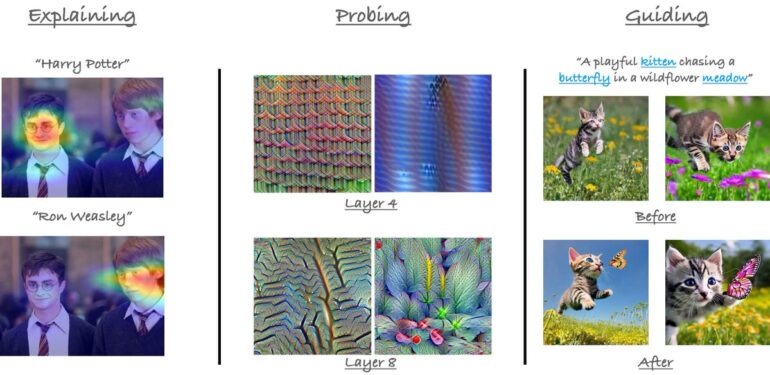TL;DR:
- Large Language Models (LLMs) like GPT, BERT, and PaLM have demonstrated exceptional performance across various tasks.
- Open-source LLMs such as Pythia, LLaMA, and Flan-T5 allow researchers to fine-tune and improve models on custom instruction datasets.
- LLM-BLENDER, an ensembling framework, harnesses the strengths of multiple open-source LLMs for consistently superior performance.
- PAIRRANKER module identifies minute variations among potential outputs using pairwise comparison techniques.
- GENFUSER module merges top-ranked candidates to generate improved outputs.
- LLM-BLENDER outperforms individual LLMs and baseline methods, leading to higher-quality output.
- MixInstruct benchmark dataset facilitates the evaluation of LLM-BLENDER and other techniques.
- LLM-BLENDER’s performance signifies its potential for enhancing LLM deployment and research through ensemble learning.
Main AI News:
The advent of Large Language Models (LLMs) has brought about a revolution in the field of natural language processing, enabling remarkable performance across a vast range of tasks. From generating unique and creative content to accurately answering questions, translating languages, and summarizing textual paragraphs, LLMs have proven their ability to imitate human-like intelligence. Notable LLMs such as GPT, BERT, and PaLM have garnered attention for their exceptional performance in following instructions and accessing extensive repositories of high-quality data. However, models like GPT4 and PaLM, although highly capable, remain shrouded in mystery due to their closed-source nature, leaving their architectures and training data undisclosed.
In contrast, open-source LLMs like Pythia, LLaMA, and Flan-T5 have provided researchers with the opportunity to fine-tune and enhance models using custom instruction datasets. This has paved the way for the development of smaller and more efficient LLMs, such as Alpaca, Vicuna, OpenAssistant, and MPT. While there is no singular open-source LLM that dominates the market, it is clear that different LLMs excel in diverse scenarios. To consistently produce improved answers for each input, it becomes crucial to dynamically leverage the strengths of multiple LLMs through ensembling.
To address this need, researchers from the prestigious Allen Institute for Artificial Intelligence, the University of Southern California, and Zhejiang University have introduced LLM-BLENDER, an innovative ensembling framework that harnesses the unique advantages of multiple open-source large language models, delivering superior performance consistently.
LLM-BLENDER comprises two modules: PAIRRANKER and GENFUSER. These modules demonstrate that the optimal LLM for a given example can vary significantly. PAIRRANKER, the first module, employs an advanced pairwise comparison technique to identify subtle variations among potential outputs. By utilizing cross-attention encoders like RoBERTa, PAIRRANKER jointly encodes the original text and two candidate outputs from various LLMs, enabling it to determine the quality of each candidate. This sophisticated approach empowers PAIRRANKER to make informed decisions about the most suitable candidates.
The second module, GENFUSER, focuses on merging the top-ranked candidates to generate an improved output. By capitalizing on the strengths of the chosen candidates while mitigating their weaknesses, GENFUSER aims to surpass the output quality of any individual LLM. This fusion process ensures that LLM-BLENDER consistently delivers higher-quality outputs than using a single LLM or baseline method.
To evaluate the performance of LLM-BLENDER and other benchmark techniques, the research team has introduced MixInstruct, a comprehensive benchmark dataset. MixInstruct incorporates Oracle pairwise comparisons and combines various instruction datasets. This extensive dataset leverages 11 popular open-source LLMs to generate multiple candidates for each input across various instruction-following tasks. It comprises training, validation, and test examples with ground truth rankings provided by Oracle comparisons, enabling accurate and automatic evaluation of LLM-BLENDER’s performance.
The experimental findings clearly demonstrate that LLM-BLENDER outperforms individual LLMs and baseline techniques across a multitude of evaluation parameters. The ensembling methodology employed by LLM-BLENDER establishes a significant performance gap, indicating its superiority in generating high-quality outputs. PAIRRANKER’s selections consistently surpass individual LLM models, demonstrating their superior performance in reference-based metrics and GPT-Rank. Moreover, through efficient fusion, GENFUSER significantly enhances response quality by leveraging the top picks identified by PAIRRANKER.
Conclusion:
The introduction of LLM-BLENDER and its ability to leverage the diverse strengths of open-source LLMs signifies a significant development in the market. This ensembling framework not only surpasses individual LLMs but also outperforms baseline methods, establishing a new standard for excellence in language understanding and generation. LLM-BLENDER’s remarkable performance paves the way for improved business applications, offering businesses enhanced capabilities in natural language processing and communication.

